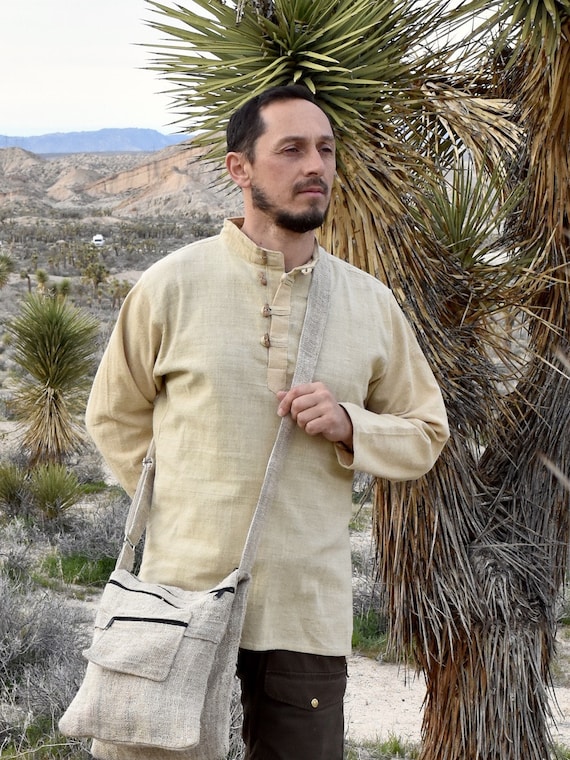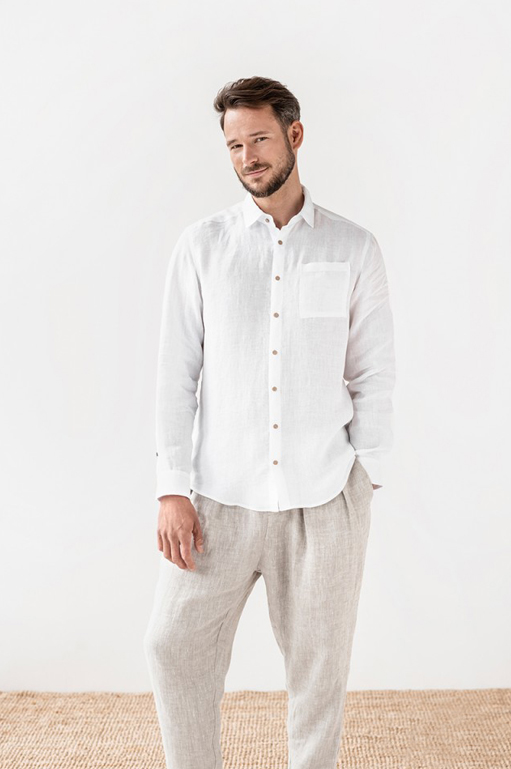Top Advice For Selecting Hemp Clothing
Wiki Article
Why Is Hemp So Much More Durable, Biodegradable, And More Regenerative Than Cotton?
Hemp because of its natural properties and the way that it is grown is thought to be more durable and renewable than cotton. Here's why- Biodegradability-
Natural FiberNatural Fiber Hemp is a plant that naturally produces fiber, and its fibers are biodegradable. Hemp textiles and clothing decompose naturally over time. They return to the environment, without leaving behind any waste that is long-lasting. This contrasts with synthetic fibers, like polyester which can require hundreds of years to decompose.
Hemp textiles are not likely to have chemical treatments or additives that may hinder biodegradability. Contrary to cotton textiles that may have chemical compounds made from synthetic materials (such as finishers or dyes) that can inhibit biodegradation, hemp textiles aren't.
Durability-
Hemp fibers are known for their durability and strength. Hemp clothing is less likely than cotton to wear out, so it lasts longer. This means that hemp clothing can last longer before it starts to show indications of wear and wear and tear.
Hemp fabric is less prone to pilling than cotton. This attribute contributes their longevity and their quality.
Regenerative Agriculture-
Soil Health - Hemp cultivation can be regenerative if carried out sustainably. Hemp can help improve soil quality by improving soil health. The roots deep of hemp can prevent erosion of the soil. This feature of regenerative nature will make the soil suitable for future cropping.
Low environmental impact. The methods for sustainable hemp production are often characterized by minimal use of pesticides or weedicides. This minimizes environmental harm. Contrary to traditional cotton farming, the use of synthetic chemicals could cause soil degradation and pollution of water.
Water Efficiency-
Hemp requires less water to development than cotton. Hemp's drought-resistant nature lets it grow even in conditions of low water or rain. This makes it more efficient in water use especially in areas where water resources are limited.
Hemp is a good crop to incorporate into rotational systems. This can help improve the soil's health and reduce the chance of disease growth and soil loss. Crop rotation in cotton farming is not as widespread.
Versatility- Hemp is a great material in many different applications like textiles, clothing, paper, building materials and many more. Hemp is grown in numerous ways that include sustainable and regenerative.
While hemp is a great product with many benefits but it is essential to be aware that hemp and cotton can both be made in a sustainable or non-sustainable way, depending on processes and methods used to grow them. The benefits for the environment of hemp can be maximized by selecting products that are made ethically and with ecofriendly methods. Similar to that selecting organic cotton products can help alleviate some environmental problems associated with conventional cotton production. See the best hemp clothing advice for blog info including patagonia iron forge pants, hemp fleece fabric, hemp fabric by the yard, hemp golf shirts, patagonia island hemp pants, hemp long sleeve shirt, patagonia hemp island pants, organic hemp underwear, hemp long sleeve shirt, hemp yoga clothes and more.

What Gives Hemp Fibers Their Moisture-Wicking, Breathable And Thermoregulatory Properties?
Hemp is a unique material with distinct structural and chemcial characteristics which give it breathable moist-wicking, thermoregulating, and wicking properties. These properties can be explained by the following microscopical structure- Hemp has a porous and hollow structure, which permits air circulation within the fibers. Hemp fabrics are extremely air-tight due to their inherent porosity. When woven into fabric, the structure allows air through. This encourages circulation and prevents the accumulation of heat and moisture on the skin.
Hemp fibers absorb moisture and wick away. Hemp is hydrophilic which implies it has an incredibly strong affinity to water. These fibers are able to absorb sweat and moisture from the surface of the skin while wearing hemp clothing. This prevents a sensation of dampness. Furthermore, hemp fibers can be effective in absorption of moisture, dispersing it across a wider surface of the fabric, where it is able to evaporate more quickly. The properties of hemp that wick moisture away keep you dry and comfortable while doing physical activity or in hot temperatures.
Hemp fibers are naturally inherently insulating. When it is cold they will keep heat in close proximity to your body and provide warmth. In the summer, they let the excess heat and moisture go away to help to cool down. The inherent thermoregulatory capability of hemp makes it ideal for clothes that are worn in a range of temperature and conditions.
Hemp fibres have anti-microbial properties which aid in preventing the growth of bacteria that cause odors. This feature contributes towards the freshness and protection from the odor of hemp clothing in periods of physical training.
Hemp fibers are durable and durable. They can last for a long period of time. Fabrics made of hemp fibres will keep their breathability and moisture wicking ability even after many washings and usage. The long-lasting properties of hemp clothing extends its life span, decreasing the need for replacement and the environmental impact.
UV Protection Hemp fibers protect the skin from harmful UV radiation. This UV blocker's ability enhances the versatility of hemp clothing which makes it ideal for activities outdoors.
These characteristics are inherent in hemp fibers and are not dependent on chemical treatment or other additives. Hemp's natural characteristics make it an eco-friendly and comfortable fabric, especially for activewear, outdoor clothes and warm weather clothing. Because hemp fibers are processed and then woven in a way, they keep their natural qualities and make them a green, functional fabric. Follow the top hemp clothes hints for blog info including hemp sweatshirt, hemp coat, 100 hemp clothing, hemp button down shirt, jungmaven t shirt, hemp long sleeve shirt, 100 hemp clothing, jungmaven sweatshirt, hemp jeans, hemp clothing for men and more.

What's the difference between bamboo and hemp fibers?
Bamboo and hemp are two different plant-based fibers used in the production of textiles each with their own unique qualities and characteristics. Here are a few of the most significant differences between bamboo and hemp fibre- 1. Plant Source-
Hemp- Hemp is derived from hemp stalks. Particularly the basts on the outside. Hemp, a versatile and rapidly-growing plant, has been cultivated in many ways for centuries.
Bamboo fibers are made of bamboo pulp. Bamboo is grass that is fast growing and is renowned for its long-lasting qualities.
2. Fiber Characteristics-
Hemp- Hemp is known for its strength and durability. They are the most durable of all natural fibers. Each time they wash them, they soften up, which makes them perfect for fabrics that last a long period of.
Bamboo Bamboo fibers are exceptionally soft and have a silky texture. The fibers are less strong than hemp, and are more delicate. But they are highly sought-after for their comfort when used on the skin.
3. Texture and Feeling
Hemp- Hemp fabric has an extremely rough and textured feeling, particularly in its natural state. It's comfortable, but its texture is distinct from bamboo.
Bamboo is soft and silky smooth. It is frequently described by those who wear it as a mixture of cotton and silk.
4. Breathability (and moisture-wicking)-
Hemp- Hemp is naturally breathable. Hemp also absorbs water. They can keep you cool and dry in hot temperatures.
Bamboo fibers are also able to wick away water and are extremely ventilated. Micro-gaps in the fabric enhance the ability of bamboo to regulate temperature and moisture which allows you to remain comfortably in a variety of conditions.
5. Environmental Impact-
Hemp Hemp is an environmentally friendly fiber due to due to its rapid growth rate, low requirements for water, and its resistance to pests. These attributes reduce the use of herbicides or pesticides. Hemp can also eliminate carbon dioxide from atmosphere when it grows.
Bamboo is a plant that is eco-friendly. It is very durable, is fast growing and requires minimal water. Certain varieties of bamboo are thought to be extremely sustainable, like Moso bamboo.
6. Processing-
Hemp- Hemp fibres need intensive processing to separate out the outer bast fibers and the woody core inside. The process can involve retting and decortication, in addition to mechanical separation.
Bamboo fibres typically obtained through chemical process called the viscose or rayon procedure. This is the process of breaking down bamboo pulp using chemicals. Some bamboo textiles, however, utilize closed loop processes to reduce chemical waste.
7. Versatility-
Hemp- Hemp fibers are multi-functional and are can be used in a range of uses, such as clothing, textiles, paper construction materials, and much more.
Bamboo- Bamboo fibers are used primarily in textiles and clothing, however they can also be found in some other products like sheets and towels.
Both bamboos and hemps have advantages in terms of sustainable and distinctive qualities. The choice between them depends on the specific characteristics and characteristics you want in a product made of textiles and your preferences for the environment. Take a look at the top rated bamboo clothes hints for more advice including mens boxer shorts bamboo, bamboo yoga clothing, bamboo infant clothing, mens bamboo boxer shorts, bamboo family pajamas, bamboo pants ladies, bamboo under wear, bamboo yoga clothing, bamboo t shirts wholesale, bamboo fabric clothing and more.
